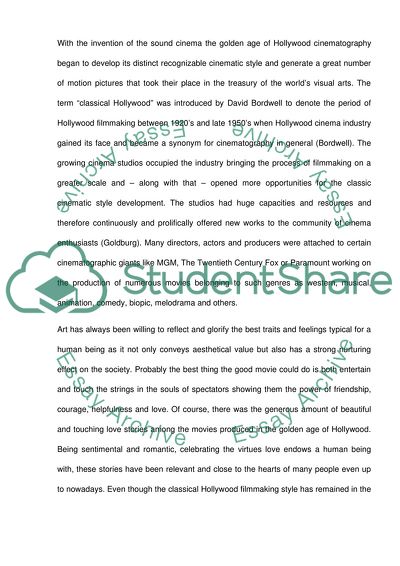Cite this document
(Classic Hollywood Cinema Style in Casablanca Movie Review, n.d.)
Classic Hollywood Cinema Style in Casablanca Movie Review. https://studentshare.org/visual-arts-film-studies/1836570-describe-and-account-for-the-style-the-techniques-formal-codes-and-conventions-of-classic-hollywood-cinema-illustrate-your-answer-with-reference-to-specific-film-s
Classic Hollywood Cinema Style in Casablanca Movie Review. https://studentshare.org/visual-arts-film-studies/1836570-describe-and-account-for-the-style-the-techniques-formal-codes-and-conventions-of-classic-hollywood-cinema-illustrate-your-answer-with-reference-to-specific-film-s
(Classic Hollywood Cinema Style in Casablanca Movie Review)
Classic Hollywood Cinema Style in Casablanca Movie Review. https://studentshare.org/visual-arts-film-studies/1836570-describe-and-account-for-the-style-the-techniques-formal-codes-and-conventions-of-classic-hollywood-cinema-illustrate-your-answer-with-reference-to-specific-film-s.
Classic Hollywood Cinema Style in Casablanca Movie Review. https://studentshare.org/visual-arts-film-studies/1836570-describe-and-account-for-the-style-the-techniques-formal-codes-and-conventions-of-classic-hollywood-cinema-illustrate-your-answer-with-reference-to-specific-film-s.
“Classic Hollywood Cinema Style in Casablanca Movie Review”. https://studentshare.org/visual-arts-film-studies/1836570-describe-and-account-for-the-style-the-techniques-formal-codes-and-conventions-of-classic-hollywood-cinema-illustrate-your-answer-with-reference-to-specific-film-s.


